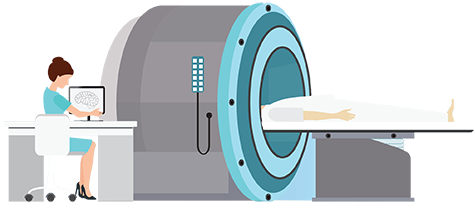

Radiologic technologists in Texas and across the country have been trained in the use of X-ray technology, which aids physicians in identifying and diagnosing illnesses in patients. X-ray imaging can help doctors in numerous ways, such as pinpointing a fracture in a bone or determining if intestinal digestive problems or bone cancer may be present, according to The Mayo Clinic. In addition to knowing how to take internal images of the body, radiologic technologists may also have the following responsibilities, according to the Bureau of Labor Statistics (BLS):
Among others, popular jobs in the field include:
Below is a list of some of the schools in Texas that offer radiologic technologist degrees and programs, according to the National Center for Education Statistics, including radiology schools in major cities such as Dallas and Houston, as well as smaller metro areas.
Pursuing a career in radiology generally requires completion of an associate or bachelor’s degree, depending on the level of the occupation that interests you, according to the BLS. Students enrolled in radiology schools in Texas may find that clinical, hands-on skills comprise an important part of their learning, but other classes can help them learn more about clinical competence and professionalism. Although courses and requirements can vary from school to school, the education needed to enter the radiologic technology profession is often the same. Students enrolled in radiologic technologist schools in Texas could takes classes that include or are similar to:
Before enrolling in a program, students may want to check to see if it is accredited through the Joint Review Committee on Education in Radiologic Technology (JRCERT). Although licensing is not required for radiologic technologists in all states, graduation from an accredited program is often needed in those states that do require licensure. In Texas, passing the exam offered by the American Registry of Radiologic Technologists (ARRT) or the Nuclear Medicine Technology Certification Board (NMTCB) is necessary to seek state licensure.
Once licensure is initially obtained, 24 hours of continuing education is necessary every two years to seek renewal. Licensure is good for two years. The state also does offer reciprocity licensing, meaning that if applicants are licensed in another state that has similar licensing requirements they may not need to go through the process in Texas. After entering the field, radiologic technologists may want to look into specializing in specific areas that can vary from cardiac-interventional (CI) radiography to mammography.
In a state the size of Texas, the pay for different occupations can vary a lot by where you live, but comparing the average annual salaries can be helpful for determining which field is the best investment in your education.
| Career | Total Employment | Annual Mean Wage |
|---|---|---|
| Cardiovascular Technologists and Technicians | 6,160 | 50,360 |
| Diagnostic Medical Sonographers | 5,270 | 78,250 |
| Magnetic Resonance Imaging Technologists | 2,760 | 70,570 |
| Nuclear Medicine Technologists | 1,030 | 76,310 |
| Radiologic Technologists | 15,870 | 57,350 |
Texas Radiological Society
6705 Hwy. 290 West
Suite 502, #243
Austin, TX 78735-8407
TRS phone: (512) 535-4920
TRS fax: (512) 535-6320
Renita Fonseca, CMP, Executive Director
E-mail: [email protected]
http://www.txrad.org/index.html
Medical Radiologic Technologist Certification Program
Texas Department of State Health Services
Mail Code 1982
P.O. Box 149347
Austin, Texas 78714-9347
E-mail: [email protected]
Telephone: (512) 834-6617
Fax: (512) 834-6677
http://www.dshs.state.tx.us/mrt/